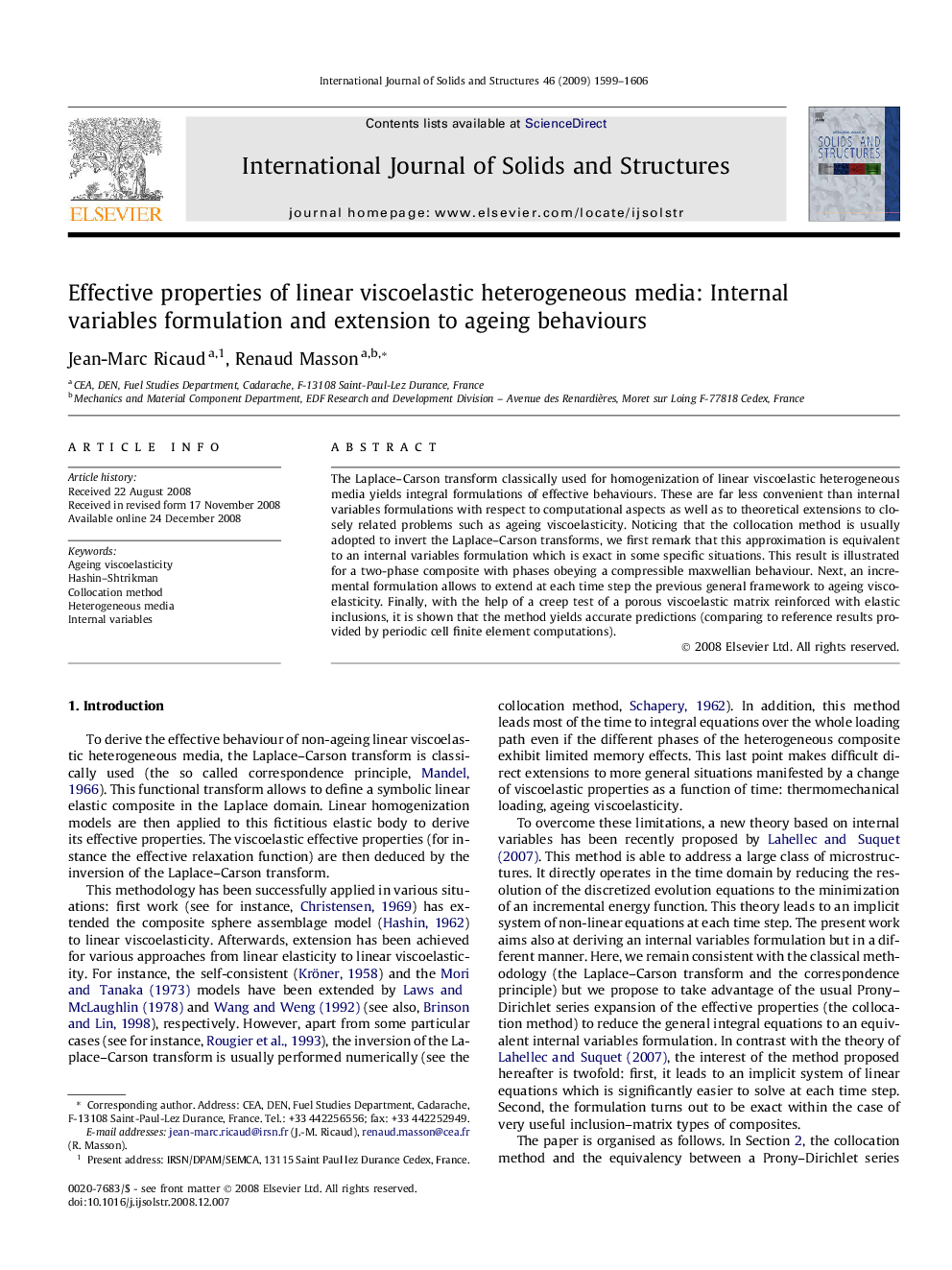| Article ID | Journal | Published Year | Pages | File Type |
|---|---|---|---|---|
| 279256 | International Journal of Solids and Structures | 2009 | 8 Pages |
The Laplace–Carson transform classically used for homogenization of linear viscoelastic heterogeneous media yields integral formulations of effective behaviours. These are far less convenient than internal variables formulations with respect to computational aspects as well as to theoretical extensions to closely related problems such as ageing viscoelasticity. Noticing that the collocation method is usually adopted to invert the Laplace–Carson transforms, we first remark that this approximation is equivalent to an internal variables formulation which is exact in some specific situations. This result is illustrated for a two-phase composite with phases obeying a compressible maxwellian behaviour. Next, an incremental formulation allows to extend at each time step the previous general framework to ageing viscoelasticity. Finally, with the help of a creep test of a porous viscoelastic matrix reinforced with elastic inclusions, it is shown that the method yields accurate predictions (comparing to reference results provided by periodic cell finite element computations).
